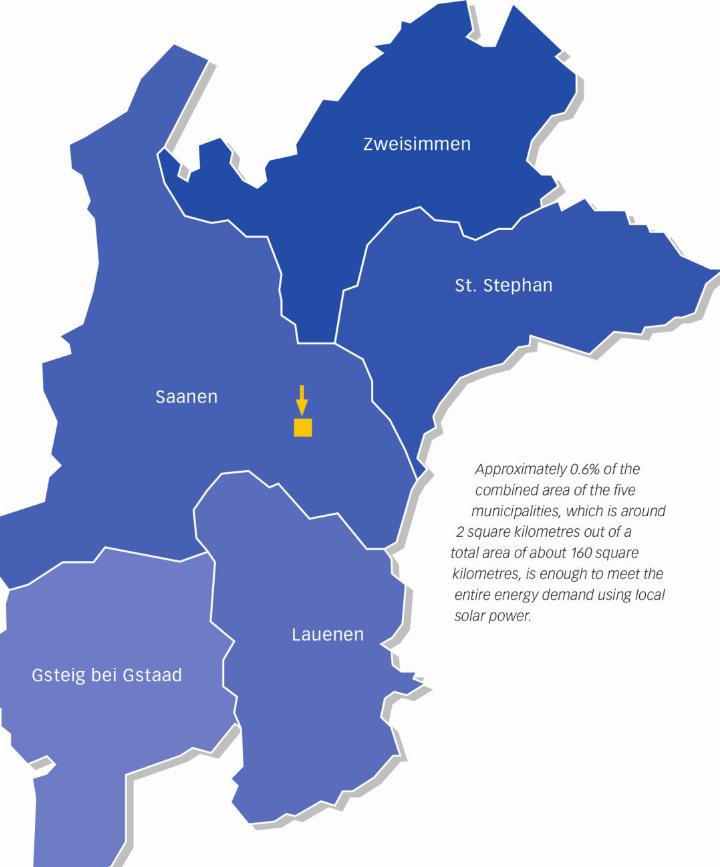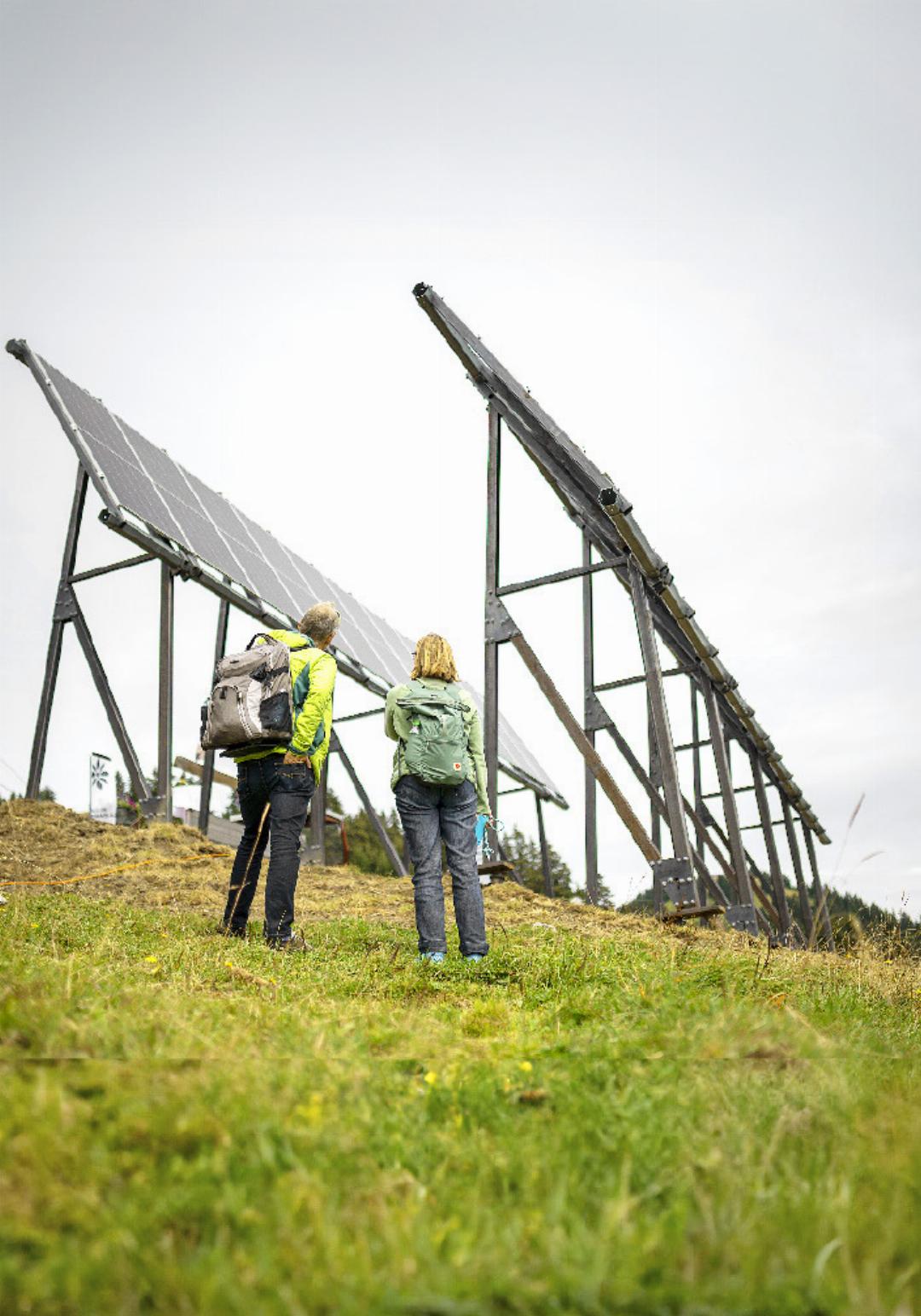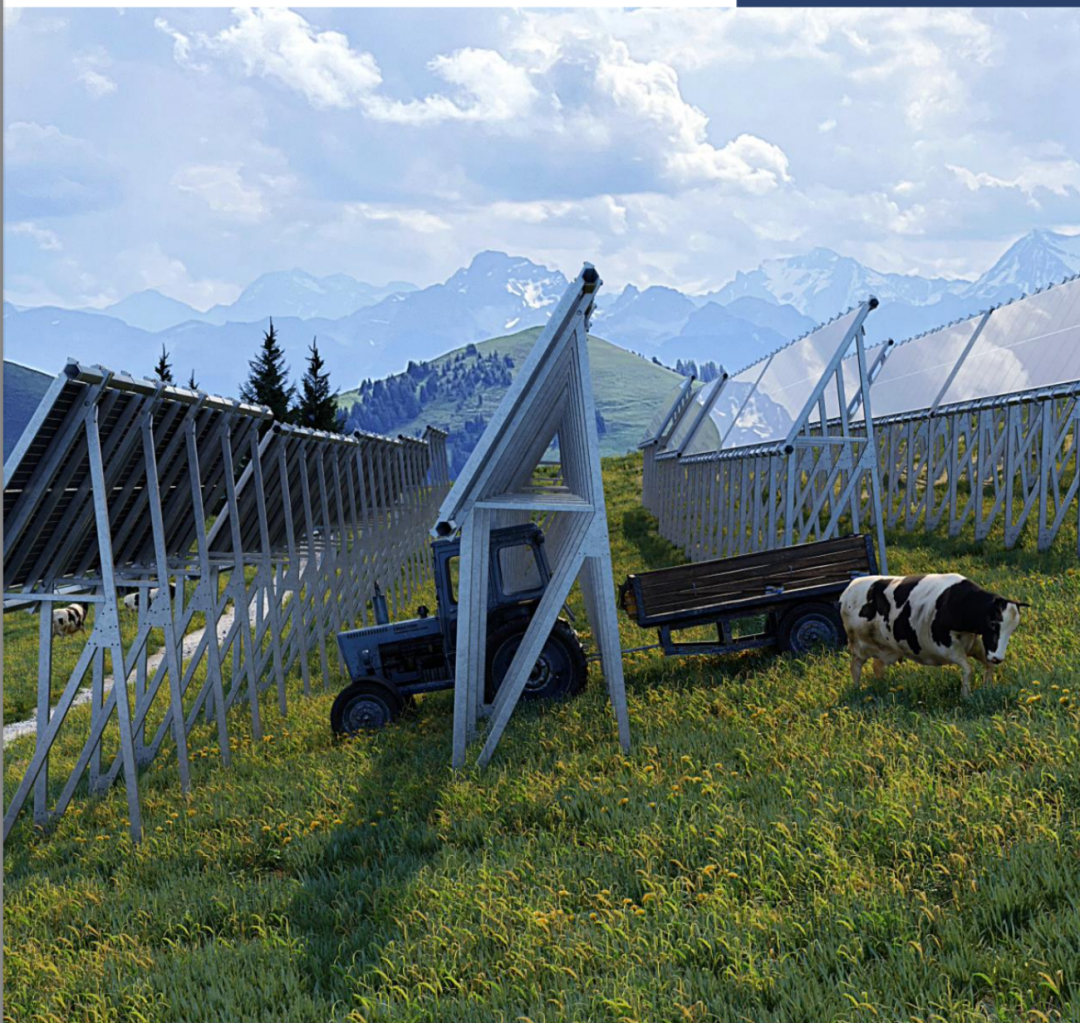Harvesting sunshine for Saanenland
08.09.2023 Profile, OUTDOOR - HIKING - BIKING, Municipal - Politics, Bergbahn Destination Gstaad, Gstaad Saanenland Tourism, Business, Local NewsSeeing the SolSarine Solar Power Project as a Regional Asset
Our region has long been known for its forward-thinking initiatives. As the world continues to evolve towards cleaner and more sustainable energy sources, a ground-breaking project is poised to not only contribute to the region’s energy self-sufficiency but also pave the way for exciting new business opportunities. The SolSarine, a photovoltaic (PV) project, promises to be a beacon of innovation and collaboration that goes beyond powering homes – it has the potential to empower the entire region.
As Switzerland sets its sights on embracing renewable energy solutions, a visionary local initiative gains traction. With resounding approval of the Climate Act and the federal government’s ambitious “solar offensive,” the path to an energy transition is wide open. Positioned at the forefront of this transformative journey is the dynamic force known as “SolarExpress.“ Its local pioneers are driven by a steadfast commitment to expedite change, aiming to inaugurate the region’s premier solar park by 2025. Aiming to serve Saanen, Gsteig,
Lauenen, and Zweisimmen, these pioneers strive to energise these communities with locally generated, environmentally friendly electricity.
It’s a late afternoon when we meet, me and the sunny boys, Matthias In-Albon, Lorenz Furrer and Andrea Scherz, at the Landhaus in Saanen. I’m curious to get an insight into the project that has been filling the headlines all summer. It is two weeks prior to the on-site presentation on Hornberg, where a few test solar panels have been installed, and the project revealed to a wider public.
The SolSarine project was launched by Furrer and In-Albon on their own initiative – “it is a cause close to our hearts”, they both emphasise in unison.
“I, as a local hotel owner, felt very much obliged to participate in this project not only as a businessman but also as a citizen. I asked myself the question: can we afford to remain passive, and in my mind the answer is a big resounding NO!” says Scherz
I visited Antarctica last winter and saw first-hand what climate change can do to our planet; we have to change, no question about it, and with this “Solsarine” project, we are the locomotive driving the change in Switzerland and hopefully far beyond its border.
Andrea Scherz
At first glance, the benefits of the SolSarine might seem apparent: harvesting sun energy to generate power, reducing the carbon footprint, and moving towards energy independence.
The project’s overarching goal is to bridge the winter energy gap using alpine solar systems, an innovation that holds immense promise for the region’s energy security. Alpine solar systems, in comparison to conventional PV systems, offer a distinct advantage in meeting energy needs during winter months and only using a small fraction of the available alpine surfaces.
We live from the hydropower of our grandfathers and from the nuclear power of our fathers. Now, it is up to us to take care of the next generation. Alpine solar power is one of the best options for this
Matthias In-Albon
“SolSarine” has rapidly evolved into a lean yet comprehensive entity capable of overseeing the entire spectrum of solar project development. From legal, social, and political processes to financing and project implementation, the scope is extensive. Lorenz Furrer conveys his enthusiasm, “Thanks to the fact that we started thinking about Alpine solar parks early on, we are now the pioneers in the field,” showcasing the headway they’ve made compared to competitors in terms of planning, clarifications, and contractual agreements.
Strong Backing from Locals and Investors Alike
The overarching objective of “Sol-Sarine” is to meet 100 percent of Saanenland’s energy needs through local solar power. The guiding mantra echoes the familiar Migros slogan, “solar power from the region, solar power for the region,” as articulated by Matthias In-Albon. This aspiration entails establishing multiple solar parks across six to seven locations, encompassing an estimated total area of 200 hectares or about two square kilometres. This amounts to just 0.6 percent of the combined land in the four municipalities. Ultimately, these initiatives are projected to generate around 300 gigawatts of electricity annually. Already, “SolSarine” boasts commitments from both landowners and municipalities, accounting for approximately half of the required area.
The project also taps into the broader trend of conscious consumerism. With a growing number of individuals and companies looking to reduce their environmental impact, the demand for clean energy solutions is on the rise. Saanenland could seize this opportunity by positioning itself as a reliable source of renewable energy services.
Moreover, embracing the initiative showcases Saanenland’s dedication to a future for the coming generations. By investing in renewable energy, the region sends a powerful message about its commitment to environmental stewardship. This not only enhances the area’s reputation but also serves as an inspiration to other alpine regions considering similar ventures.
The next impounding question is, naturally, what is all this going to cost, and how will it be financed?
The investment volume depends on the actual size of the solar parks; however, projections are around 100- 150 million Swiss francs for the first 2 sites, of which up to 60 per cent will be financed by the federal government. The remaining 40 per cent is to be financed privately or from the Impact Gstaad community.
“The project has already been met with immense positive feedback from both private as well as institutional investors, but local people should also have the opportunity to invest so the project can cultivate community growth,” says Lorenz Furrer.
Balancing Progress and Preservation
As with any significant undertaking, it’s essential to consider the potential ecological implications associated with alpine PV systems. The very design of these installations caters to harmonious coexistence with the alpine environment. The solar modules are engineered to continue producing electricity even when the landscape is covered in up to 3 meters of snow. This unique feature enables wildlife and alpine cattle to roam freely without disturbance. To optimise energy production from the winter sun, the solar panels are steeply inclined to avoid snow covering the panels.
The undeniable truth is that such installations do have an impact on the landscape, potentially influencing biodiversity. Here, SolSarine demonstrates a responsible approach, acknowledging both environmental and societal considerations. The chosen locations for these installations are strategically positioned in a way that they remain inconspicuous from settled areas. This intentional placement might not only address aesthetic concerns but could also contribute to fostering biodiversity by preserving natural habitats. The initial findings of long-term scientific studies planned for these installations will provide valuable insights into their ecological effects.
A project that holds far more potential than meets the eye.
Beyond the environmental gains, the SolSarine initiative could catalyse a new era of economic growth for Saanenland. One of the most intriguing aspects of the project lies in its ability to create a platform for knowledge exchange and skill-sharing. The group behind SolSarine will accumulate vast expertise in solar energy development, implementation, and management. By sharing this know-how with entrepreneurs, the project has the power to ignite a wave of new businesses centred around renewable energy technologies. This could potentially position Saanenland as a hub for sustainable innovation in the energy sector.
In our quest to embrace the future, we stand at a crossroads where progress and preservation converge. By harvesting the benefits of alpine solar systems and, at the same time, treading cautiously to safeguard our precious environment, we can set a precedent for responsible innovation
Lorenz Furrer
“Now” is the time for Saanenland to shine
In an era where the imperatives of environmental consciousness are more pressing than ever, Saanenland stands poised to make a significant impact on energy transformation. With visionary minds propelling the “SolSarine” initiative forward, the region has the potential to emerge as a leader in sustainable energy solutions, setting a remarkable precedent for other communities to follow suit.
JEANETTE WICHMANN
In the upcoming 28 months, the Swiss federal government has allocated a staggering 3.4 billion Swiss francs in subsidies for alpine solar projects, aiming to produce an impressive two-terawatt hours of electricity. The race to harness this “SolarExpress,” as christened by Article 71 of the Energy Act, is on, and innovators are leading the charge. Among these visionaries are Lorenz Furrer, renowned for his advocacy in energy policy and co-owner of international communications agency “furrerhugi,” and Matthias In-Albon, CEO of Bergbahnen Destination Gstaad AG. Furrer played a pivotal role in co-founding “Impact Gstaad”, together with In-Albon. Consequently, the sustainability panel of Impact Gstaad became the ideal avenue to embark on the “solar express.” This paved the way for the inception of “SolSarine” at the outset of the year, swiftly followed by the establishment of its public limited company counterpart in April.










